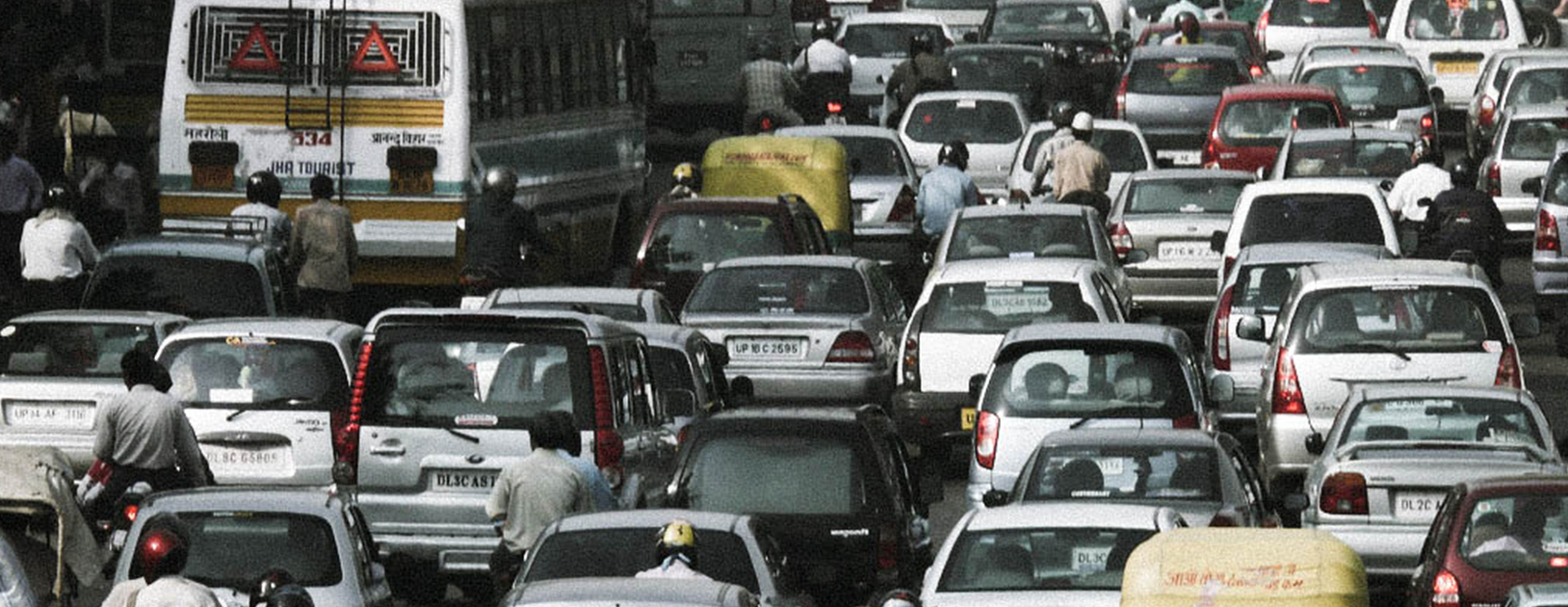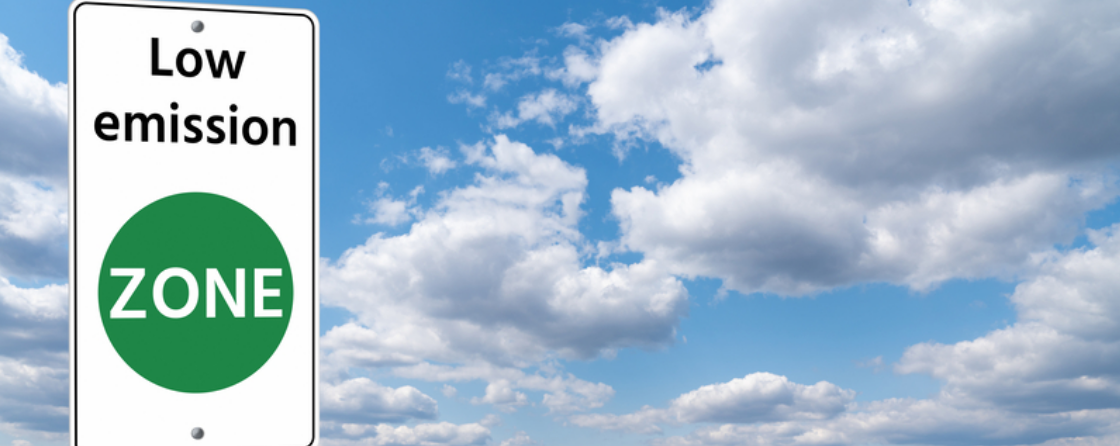The role of the transport sector in Delhi’s air quality, key drivers and opportunities for intervention

AN INTERVIEW WITH THE PANELISTS AT THE CLEARING THE AIR SEMINAR SERIES
AIR POLLUTION
On 1st February 2018, the Initiative on Climate, Energy and Environment (ICEE) in partnership with the Urbanisation focus area at CPR organised a panel focusing on how transportation impacts air pollution in the Delhi NCR, looking at possible solutions, both immediate and long-term. The following Q&A is based on the discussion between moderator Mukta Naik (CPR) and panelists Sumit Sharma (Fellow and Associate Director at Earth Science and Climate Change group of TERI), Parthaa Bosu (air pollution expert), and Amit Bhatt (Director of Integrated Urban Transport at WRI India).
Vehicles are often underplayed as a source for air pollution. Yet they are obviously both a significant source as well as an opportunity for intervention in a rapidly urbanising context. How would you characterise the contribution of vehicular emissions to the air pollution issue in Delhi NCR and beyond?
Sumit Sharma: To begin with, India’s ambient air quality standards are far higher than WHO norms so even air that is ‘clean’ by our standards is not really clean or healthy. When one goes down from all-India to city-level pollution data, the figures are alarming. In urban areas, vehicles contribute a significant share to air pollution, particularly PM10/PM2.5, but also NOX, VOC and BC emissions. There is no single factor influencing the contribution in Delhi NCR or beyond but it is impacted by vehicle density in a location, age of vehicles on road, fuel type, and speeds at which vehicles are moving.
Parthaa Bosu: Vehicular emissions are a function of the fuel quality, adulteration, and its monitoring, including a lack of technology to measure adulteration. In Delhi NCR and beyond, we see that vehicular traffic on the road is not just conventional urban transport (whether private or public), but also increasing volumes of freight. With penetration of e-commerce there’s been an explosion of “Urban Freight”, which has both direct as well as indirect ways of contributing to air pollution. Enforcement is also a problem: stipulated older vehicles are officially not allowed to ply in Delhi NCR, but they continue to do so.
Amit Bhatt: Our understanding on the impact of transport emissions on health is still evolving. However, physical exposure to pollutants is an important factor. This exposure is the maximum during commuting. In Delhi NCR and beyond, exposure levels will vary depending on the type of vehicle and time of commute, and understanding this micro context is important.
Delhi–NCR has seen a number of policy responses to the problem of vehicular pollution, such as shifting of transport vehicles to CNG, Odd-Even scheme etc. Despite this, the problem continues to persist and even worsen. Why have the earlier policy responses to vehicular pollution not worked adequately? Are current responses likely to face the same fate?
Sumit Sharma: Historically, policy responses to pollution, in Delhi NCR and beyond, have largely driven by the court without adequate understanding of the full context – for instance, shifting of polluting industries out of central Delhi to upwind areas such as Bawana is not helpful since the pollution will be blown back towards the city. Given that transport is a major contributor to PM 2.5, the move towards cleaner Bharat Stage–VI fuel is essential. However, this will only prevent emissions from increasing further and not reduce it from the present level. In terms of improving fuel standards, India has been an early mover, but these gains have been constrained by increase in the number of vehicles as well as presence of old vehicles on the road.
Parthaa Bosu: Fuel quality is a major issue, which has not been given adequate importance. Merely shifting a section of transport to cleaner fuels will not help as vehicles of older technology are still plying. Fuel standards must be nationwide. The PUC emission testing system for vehicles is also broken.
Availability of quality public transit is an important factor. While investments have been made in Delhi’s public transit system, it still does not adequately dis-incentivise owners of private vehicles. It is still cheaper and/or faster to use private vehicles, especially after the recent Metro fare hike. Multi-modal integration and last-mile connectivity remains as a deterrent for people to take public transport. Poor gender planning of a city also has bearings on air pollution, every individual should feel secure to travel on their own, else they will depend on personal vehicles for completing the trips or last mile.
The urban freight sector has not been factored into policy planning for emissions. With the e-commerce and logistics market expanding rapidly in Delhi-NCR and other urban centers, this is also likely to be a major source of pollution. There is no transition plan for trucks – merely restricting their entry or diverting them will not help in the long run.
The lack of scrappage policy means that vehicles which are old or burn dirty fuels have just moved from Delhi to NCR, and then slightly beyond. PM2.5 can travel more than hundreds of kilometres, so banning old vehicles in Delhi while allowing them ply just 20 or 50km away cannot be a solution at all.
Amit Bhatt: Policy has hitherto disproportionately focused on transport vehicles without restricting private vehicles. In Delhi, the reduction in emissions due to transition of public vehicles to CNG was offset by the large increase in private vehicles. Even public transit has not expanded adequately – Metro coverage is slowly increasing but the bus fleet is well below the number required. Due attention needs to be paid to modal share in transport planning- less than 15% of Delhi moves by car, 25-30% by 2-wheeler. The share of buses is falling, but given buses offer least exposure, they should be prioritised.
The Central Government’s plan of transitioning to an all-electric fleet needs to include massive infrastructural expansion for electric vehicles, and a plan to deal with the vehicles that will have to be replaced. There is a serious lack of policy clarity- if we are pushing aggressively for e-vehicles by 2030, there is no roadmap for the transition.
What should be the policy priorities for reducing vehicular emissions? Where do you see quick gains?
Sumit Sharma: I would say, in the context of fleet age, there is a need to have a scrappage policy and invest in modernisation of vehicle fleets. Similarly, responses during episodic peaks are important but not sufficient: the odd-even scheme, for instance, had only limited efficacy. There also needs to be better monitoring and dissemination of information to help the commuting public take informed decisions regarding commuting and transportation.
Parthaa Bosu: Policy solutions to pollution must consider a national approach, while at present they are too city-centric for a problem that is regional and even trans-boundary. For instance, a registry of in-use vehicles is needed. Finally, the policy vision must be long-term and not restricted like all the earlier initiatives which were short-term or focused on only a small segment of the vehicular population.
Amit Bhatt: As I said earlier, from the perspective of reducing exposure, public buses must be prioritised. Focusing on reducing commute time to reduce exposure by giving priority to public transport might also offer quicker gains, for example the odd-even did not succeed in significantly bringing down pollution levels, but it did reduce exposure and this should become an important public debate too.



